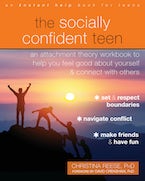We’ve all been there. A client is sharing a traumatic experience. They are talking about an incident of anxiety during the week. Or, they are having a hard time expressing their thoughts and feelings. They have a hard time catching their breath, are escalating, and may even be crying.
What can we do in that moment to help the client regulate? This is a great opportunity to practice coping strategies in session and show the client how effective they can be. It is also a great time for us, as clinicians, to model the strategy and build rapport by doing it with the client. Here are some specific tips for practicing coping skills with clients:
· Encourage the client to stop talking and take a few deep breaths with you. (Regulating the respiratory system will regulate the circulatory system.)
· Engage the client in a grounding activity, including naming things they can see, touch, hear, smell, and taste. (Harness the senses to bring calm.)
· Keep some hard candies on your desk and offer one to the client. (The senses of taste and smell are connected and can ground the client.)
· Walk and talk. Take the session to the parking lot or a park, but get the client moving (to burn the stress hormone adrenaline that is being released during the anxiety).
· Offer a drink of water (to flush out another stress hormone, cortisol).
· Have the client count backwards from ten. (Using the logical, analytical brain can distract from the escalating emotional brain.)
Once they are calm, review what was helpful and have the client practice it during the week for homework. This increases muscle memory and feelings of confidence and competency for your client. Finding ways to effectively calm anxiety allows your client to take back control over their emotions—and this is empowering!
Christina Reese, PhD, is a licensed clinical therapist who specializes in attachment theory. She has extensive experience with attachment trauma and adoption, working on connecting families and building stronger relationships. Reese provides educational seminars across the country on attachment and trauma in children and families, and is author of Attachment, Puzzle Pieces, The Attachment Connection, and Trauma and Attachment.



 2024 Peace Playbook: 3 Tactics to Avoid Clashes with Your Partner
2024 Peace Playbook: 3 Tactics to Avoid Clashes with Your Partner